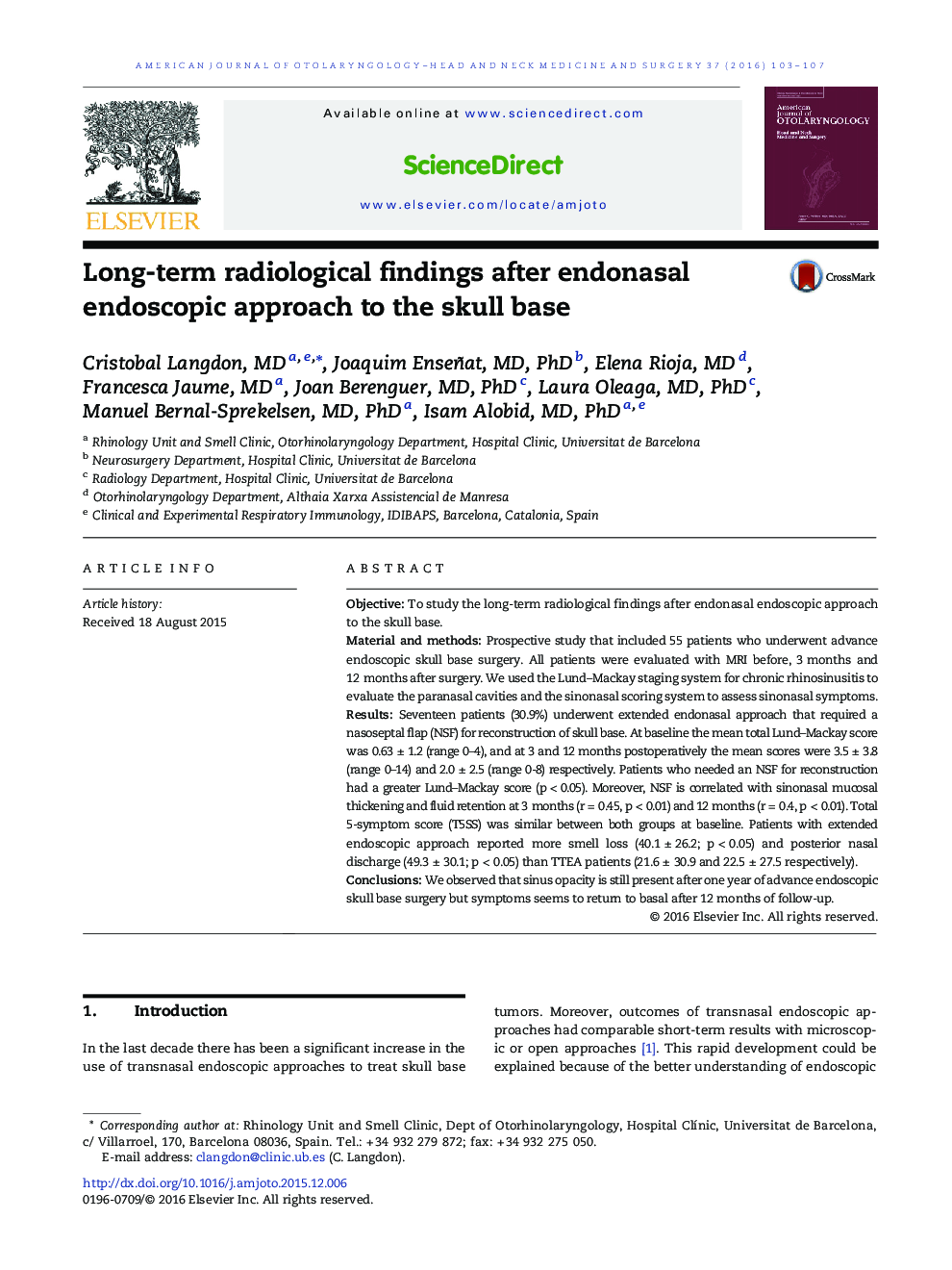| Article ID | Journal | Published Year | Pages | File Type |
|---|---|---|---|---|
| 4102972 | American Journal of Otolaryngology | 2016 | 5 Pages |
ObjectiveTo study the long-term radiological findings after endonasal endoscopic approach to the skull base.Material and methodsProspective study that included 55 patients who underwent advance endoscopic skull base surgery. All patients were evaluated with MRI before, 3 months and 12 months after surgery. We used the Lund–Mackay staging system for chronic rhinosinusitis to evaluate the paranasal cavities and the sinonasal scoring system to assess sinonasal symptoms.ResultsSeventeen patients (30.9%) underwent extended endonasal approach that required a nasoseptal flap (NSF) for reconstruction of skull base. At baseline the mean total Lund–Mackay score was 0.63 ± 1.2 (range 0–4), and at 3 and 12 months postoperatively the mean scores were 3.5 ± 3.8 (range 0–14) and 2.0 ± 2.5 (range 0-8) respectively. Patients who needed an NSF for reconstruction had a greater Lund–Mackay score (p < 0.05). Moreover, NSF is correlated with sinonasal mucosal thickening and fluid retention at 3 months (r = 0.45, p < 0.01) and 12 months (r = 0.4, p < 0.01). Total 5-symptom score (T5SS) was similar between both groups at baseline. Patients with extended endoscopic approach reported more smell loss (40.1 ± 26.2; p < 0.05) and posterior nasal discharge (49.3 ± 30.1; p < 0.05) than TTEA patients (21.6 ± 30.9 and 22.5 ± 27.5 respectively).ConclusionsWe observed that sinus opacity is still present after one year of advance endoscopic skull base surgery but symptoms seems to return to basal after 12 months of follow-up.
